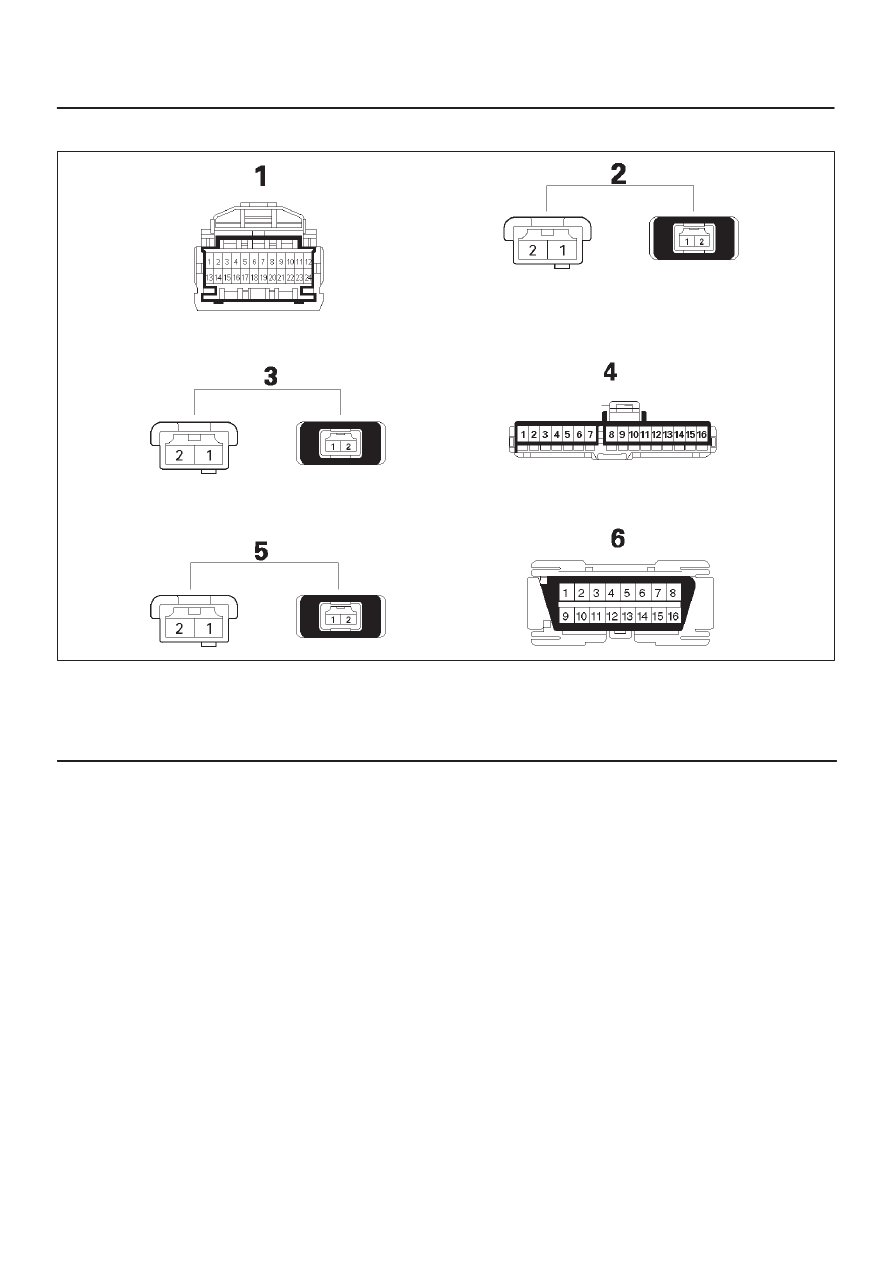Content .. 1040 1041 1042 1043 ..
Isuzu Amigo / Axiom / Trooper / Rodeo / VehiCross. Manual - part 1042

SUPPLEMENTAL RESTRAINT SYSTEM
9J–9
SRS Connector Body Face Views
D09RW003
Legend
(1) SDM
(2) Driver Air Bag Assembly
(3) Passenger Air Bag Assembly
(4) “Air Bag” Warning Lamp
(5) SRS Coil Assembly
(6) DLC Connector
Repairs And Inspections Required
After An Accident
NOTE: If any SRS components are damaged, they must
be replaced. If SRS component mounting points are
damaged, they must be replaced.
D
Never use SRS parts from another vehicle. This does
not include remanufactured parts purchased from an
authorized dealer; they may be used for SRS repairs.
D
Do not attempt to service the SDM, the SRS coil
assembly, or the air bag assembly. Service of these
items is by replacement only.
D
Verify the part number of replacement air bag
assembly.
CAUTION: Never use the air bag assembly from
another vehicle and difference model year air bag
assembly.
The air bag assembly has identification colors on the
bar code label from ’00 model as follows.
Yellow color for driver air bag assembly.
White color for passenger air bag assembly.
Use only new air bag assembly proper to the Trooper
which is being repaired.
CAUTION: Proper operation of the sensors and
supplemental restraint system (SRS) requires that
any repairs to the vehicle structure return it to the
original production configuration. Deployment
requires, at a minimum, replacement of the SDM, air
bag assembly and dimensional inspection of the
steering column. Any visible damage to the SDM
mounting bracket (s) requires replacement, and the
steering column must be dimensionally inspected,
whether deployment occurred or not.
Accident With Deployment – Component
Replacement And Inspections
Certain SRS components must be replaced or inspected
for damage after a frontal crash involving air bag
deployment. Those components are:
D
Air bag assembly
D
SDM